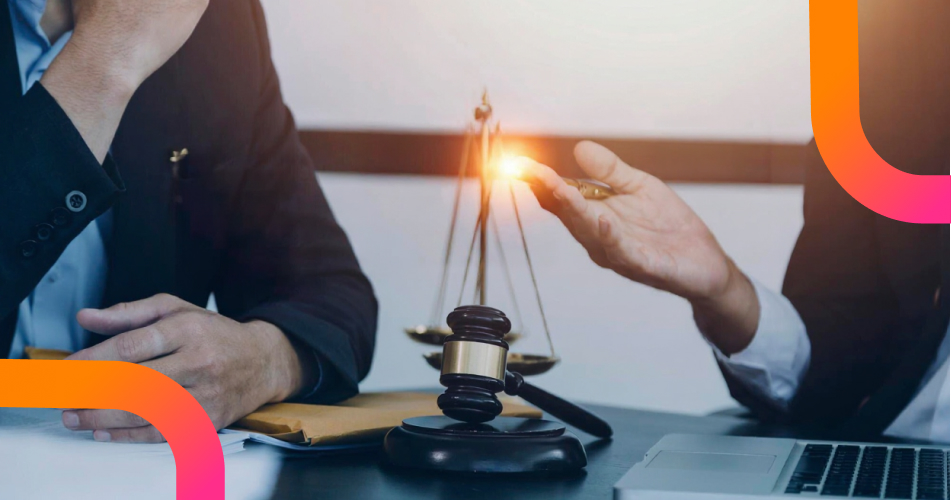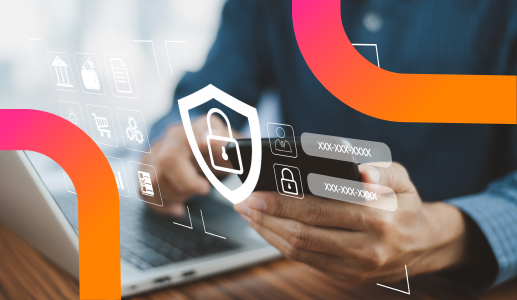The loss for companies affected by counterfeit trade is colossal. According to the OECD, which announced in February 2025 that global trade in counterfeits had reached USD 467 billion, the figures speak for themselves. It is therefore urgent for businesses to take action to protect their assets and to understand how they can adapt their response to digital infringements.

Sommaire
- The web: a prime channel for counterfeiting or defamation
- Admissible evidence, obtained faster with the online evidence collection tool
- A solution tailored to the evidence-gathering needs of legal professionals
- An intuitive system with high evidential value
- What does the Afnor NF Z67-147 standard say?
- A tool serving the digital transformation of the legal sector
- Key takeaways on online evidence collection
The web: a prime channel for counterfeiting or defamation
Online trade, which is more difficult to regulate, has become the main sales channel used by offenders. This makes the detection of counterfeits, as well as legal recourse against them, all the more challenging. In a legal context where no right can be exercised without evidence, and where such evidence can vanish rapidly, reactivity is a key success factor for any legal action. It is therefore essential for lawyers and in-house counsel representing victimised companies to be able to collect high-value evidence of infringements swiftly.
With this in mind, Evidency, a Qualified Trust Service Provider under the eIDAS regulation, has developed a Certified Record of Online Violations to support legal professionals in their day-to-day fight against online infringements. This tool enables them to record an infringement on the internet and, within minutes, build a robust evidentiary file compliant with the technical requirements of the NF Z67-147 standard, the benchmark for online evidence gathering.
Admissible evidence, obtained faster with the online evidence collection tool
The traditional process, when an infringement (counterfeiting, defamation, etc.) is identified online, is to contact a judicial officer who will carry out an official report in accordance with the requirements of the NF Z67-147 standard. Outsourcing the evidence gathering to a sworn third party ensures the admissibility of the proof in court but makes the applicant dependent on the provider’s responsiveness, creating the risk that the evidence may have disappeared by the time the report is produced.
The alternative is to collect one’s own photos, recordings, or screenshots of the elements identified on the web. While these solutions are quick and can serve as preliminary evidence, their admissibility may be challenged by the opposing party and will ultimately depend on the judge’s assessment.
The Certified Record of Online Violations developed by Evidency offers a more reliable alternative to such “DIY” evidence.
A solution tailored to the evidence-gathering needs of legal professionals
This online automated evidence tool has been developed primarily to address the need for responsiveness among legal practitioners by giving them greater autonomy in producing reports. As outlined above, for lawyers and in-house counsel, every online infringement, whether trademark counterfeiting, copyright violation, or defamation, requires a swift response.
An intuitive system with high evidential value
The tool is accessible online from any computer, and users must first create an Evidency account in order to log in. It then provides access to a secure browser dedicated to online evidence collection. Every step of the navigation is automatically recorded and timestamped, including screenshots of the relevant pages, ensuring a detailed record of the browsing process and the evidence gathered. The integrity and dating of the material are guaranteed by qualified timestamping, in compliance with the eIDAS requirements.
At the end of the process, the platform generates an electronically sealed report issued by Evidency. A complete evidence file is then made available to the user, including each timestamped screenshot, the HTML source codes of the visited pages, as well as technical information such as the IP address, hosting provider, and website identification data. This file is designed to be directly admissible in court.
What does the Afnor NF Z67-147 standard say?
This standard governs the procedure for online evidence collection in order to guarantee the admissibility of evidence before French courts. It is structured around three key stages:
- Preliminary preparation: this involves establishing a neutral environment free from any interfering elements, notably by deleting cache, cookies, and browsing history. All equipment used must also be described to avoid any bias.
- Carrying out the evidence collection: the user must remain in full control of the procedure, executing it personally and under their sole responsibility, in order to ensure its reliability.
- Closing the evidence collection process: this step includes identifying the IP address of the targeted website, retrieving Whois data, including the HTML source code, and applying a timestamping system to guarantee the integrity of the evidence gathered and the evidentiary file thus created.
A tool serving the digital transformation of the legal sector
This solution is radically transforming the practices of legal professionals by offering them autonomy, speed, and high evidential value. Whereas traditional judicial reports require the intervention of a sworn third party, this tool enables the procedure to be carried out in just a few minutes, independently, saving time and significantly reducing costs.
This enhanced responsiveness represents a major strategic advantage for lawyers, particularly in urgent situations or where rapid documentation is required.
Initially designed to combat infringements of intellectual property rights, this online evidence tool demonstrates great flexibility. It can also be used in other legal contexts, such as disputes relating to unfair competition, breaches of contract, or defamation. In short, it can be adapted to any infringement that can be recorded online.
Evidency is also developing a mobile-based evidence collection service, which will enable legal professionals to gather timestamped and geolocated proof of infringements. This tool is expected to be available in October 2025.
Key takeaways on online evidence collection
- Evidency has developed an online automated evidence tool enabling legal professionals to collect proof of online infringements independently and efficiently.
- The tool records every step of the process and timestamps each screen during navigation to build an evidentiary file admissible in court.
- The evidence file is sealed by Evidency, a Qualified Trust Service Provider under the eIDAS regulation.
- The process followed by the tool complies with every stage of the AFNOR NF Z67-147 standard.
Disclaimer
The opinions, presentations, figures and estimates set forth on the website including in the blog are for informational purposes only and should not be construed as legal advice. For legal advice you should contact a legal professional in your jurisdiction.
The use of any content on this website, including in this blog, for any commercial purposes, including resale, is prohibited, unless permission is first obtained from Evidency. Request for permission should state the purpose and the extent of the reproduction. For non-commercial purposes, all material in this publication may be freely quoted or reprinted, but acknowledgement is required, together with a link to this website.



